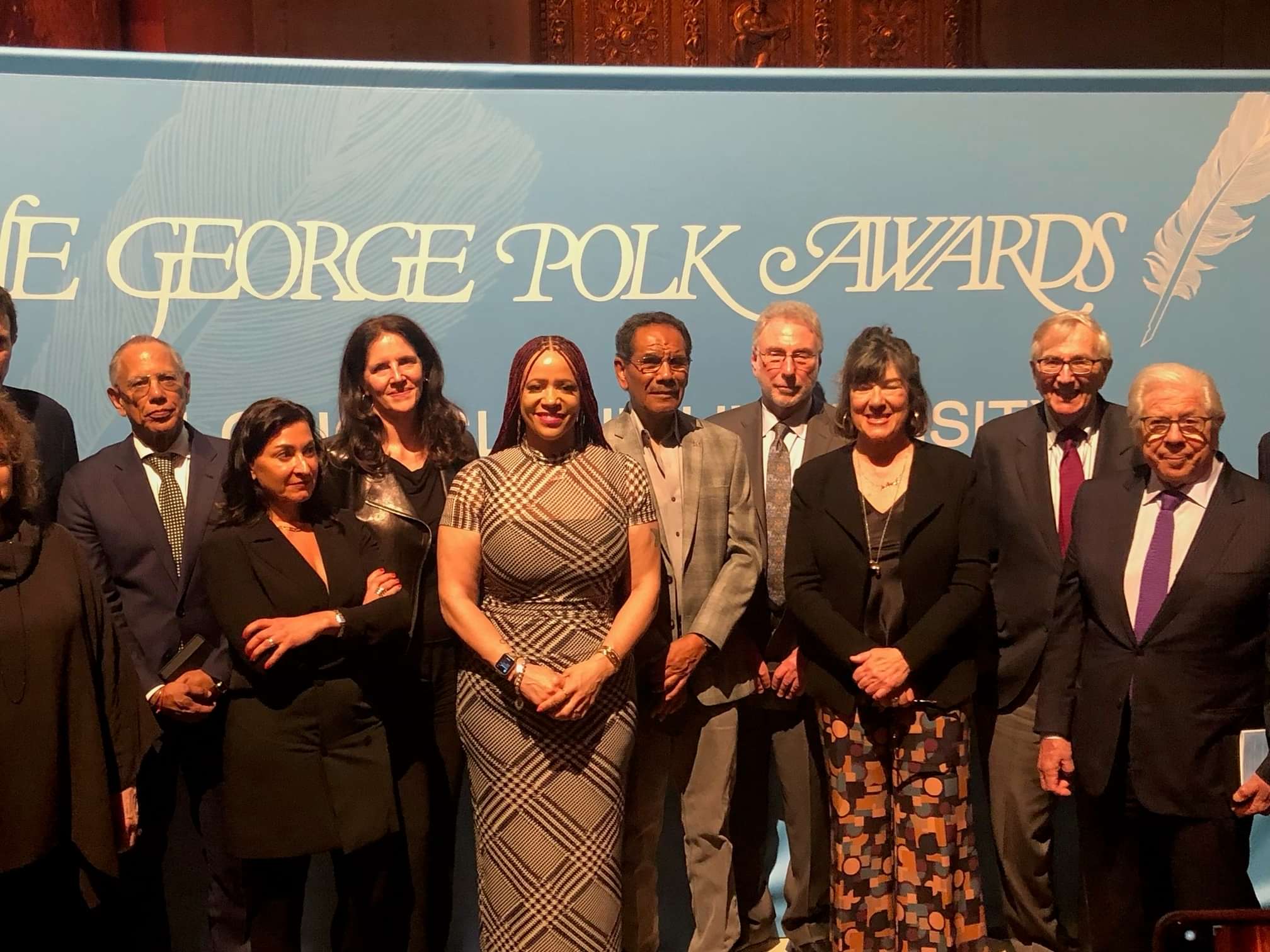
From center left to right: Nikole Hannah-Jones, author of the 1619 project; Wilbert Rideau, former Louisiana death row prisoner; CNN reporter and anchor Christiane Amanpour; Carl Bernstein, author and political commentator. Photo credit to Laura Burstein.
On April 12, 2024, Long Island University celebrated the 2023 George Polk Awards in Journalism, honoring investigative journalists and recognizing sixteen former winners, including formerly death-sentenced prisoner Wilbert Rideau. Mr. Rideau spent forty-four years incarcerated in Louisiana’s Angola State Penitentiary where he created The Lifer, one of the first Black prison periodicals. Sentenced to death in 1961 at age nineteen, Mr. Rideau spent twelve years on death row before the United States Supreme Court’s decision in Furman v. Georgia (1972), which struck down Louisiana’s capital punishment scheme. Mr. Rideau was resentenced to life in prison and moved to general population. Once there, Mr. Rideau tried and failed to get a job at The Angolite, an all-white prison magazine, and instead created The Lifer. Mr. Rideau also wrote as a freelance journalist for local newspapers and magazines. In 1976, “reformist” official C. Paul Phelps took over as Angola Prison’s new warden and named Mr. Rideau as The Angolite’s new editor. “[Mr.] Phelps felt there was a role for freedom of expression and journalism in prison,” said Mr. Rideau. “Censorship, and keeping everything a secret, was counterproductive to changings things.”
As the editor of The Angolite, Mr. Rideau produced a rich body of writing from behind prison walls and proved a vibrant uncensored magazine was a positive force in the prison setting. Mr. Rideau was given unrestricted access to phone lines, cameras, and tape recorders, and was given the opportunity to leave prison with unarmed escorts to interview individuals around the state and visit newspaper conventions. The Angolite gained national recognition for its reporting, particularly after publishing “Prison: The Sexual Jungle,” which described the sexual violence experienced by prisoners at the hands of other prisoners in Angola. In this piece, Mr. Rideau wrote that “the act of rape in the ultramasculine world of prison constitutes the ultimate humiliation visited upon the male.” In a recent interview, Mr. Rideau told The New Yorker that his goal was partly “to humanize everybody in prison, whether it’s ourselves or the guards. Because that is part of the bigger problem: people in the streets did not see us as normal, breathing human beings, like themselves.”
Sentenced to death just eight weeks after the crime in question, Mr. Rideau would ultimately have three trials — all with juries consisting of twelve white men — all of which ended in death sentences. At his first trial, the jury returned a death verdict in an hour, but the Supreme Court overturned his sentence, calling the proceedings a “kangaroo court.” In 1964, another all-white male jury returned a guilty verdict after fifteen minutes of deliberation, once again sentencing Mr. Rideau to death. Six years later, a federal court threw out this death sentence, but another jury of twelve white men found Mr. Rideau guilty after just eight minutes of deliberation. “Three juries with all white men, in a state where half the people are women, and a third of the population was Black. That was justice back then.”
With the support and legal advocacy of Linda LaBranche, the woman who eventually became his wife, Mr. Rideau received a new trial after a federal court ruled the original indictment was flawed. In 2005, at his fourth and final trial, a jury consisting of one white man, one Black man, and ten white women, determined Mr. Rideau’s case did not constitute murder. The jury found Mr. Rideau guilty of manslaughter and sentenced him to twenty-one years in prison. Having been incarcerated since the 60s, Mr. Rideau was immediately released. Reflecting on his release and incarceration, Mr. Rideau reiterated to The New Yorker the importance of his relationship with former warden Phelps. “Of all the people in my life, except my mother, I cannot imagine anyone who had a greater impact on the course of my life and the person I became than him,” Mr. Rideau said. In closing, he also emphasized the importance of prison authorities in creating change. “Sell them on this idea, man! I mean, you can write this story about me and the award, but give credit to this thing that happened, that has never happened since. Sell it to these wardens who are going to be reading this. If it doesn’t benefit you, maybe it’ll benefit somebody else. Maybe one of these wardens will say, ‘Maybe I ought to try this.’”
John J. Lennon, How To Publish a Magazine in a Maximum-Security Prison, The New Yorker, April 14, 2024; Kim Cobb, Louisiana prison journalist to be freed after 44 years, Houston Chronicle, January 16, 2005.
